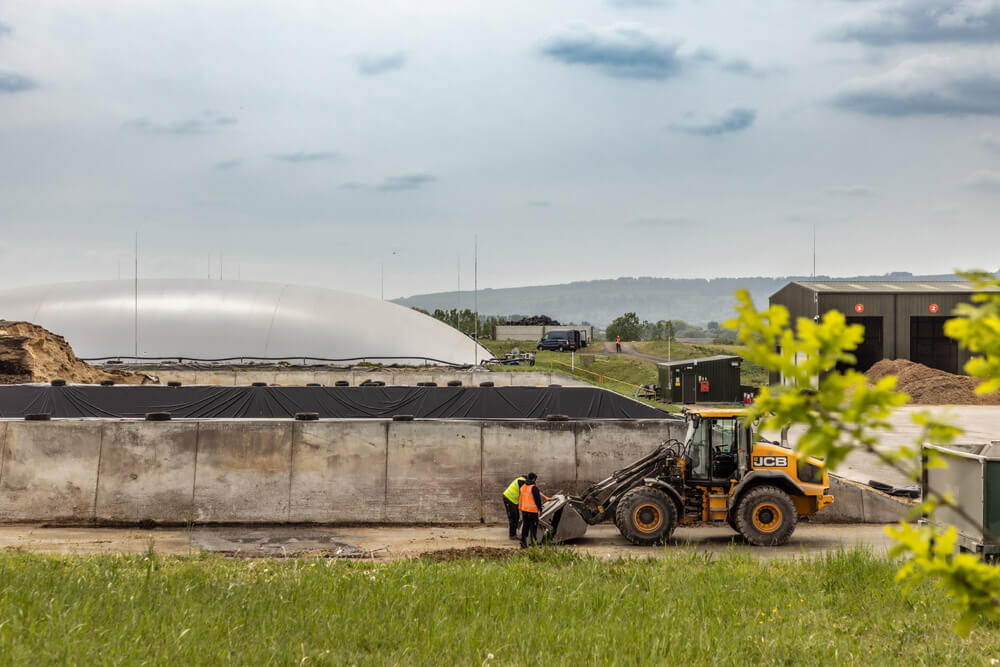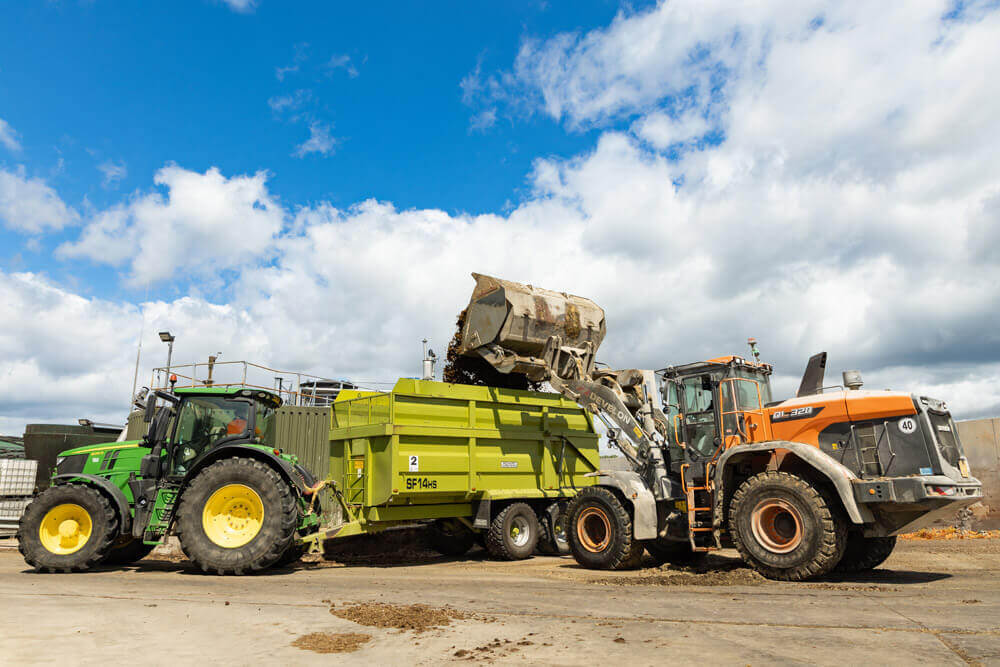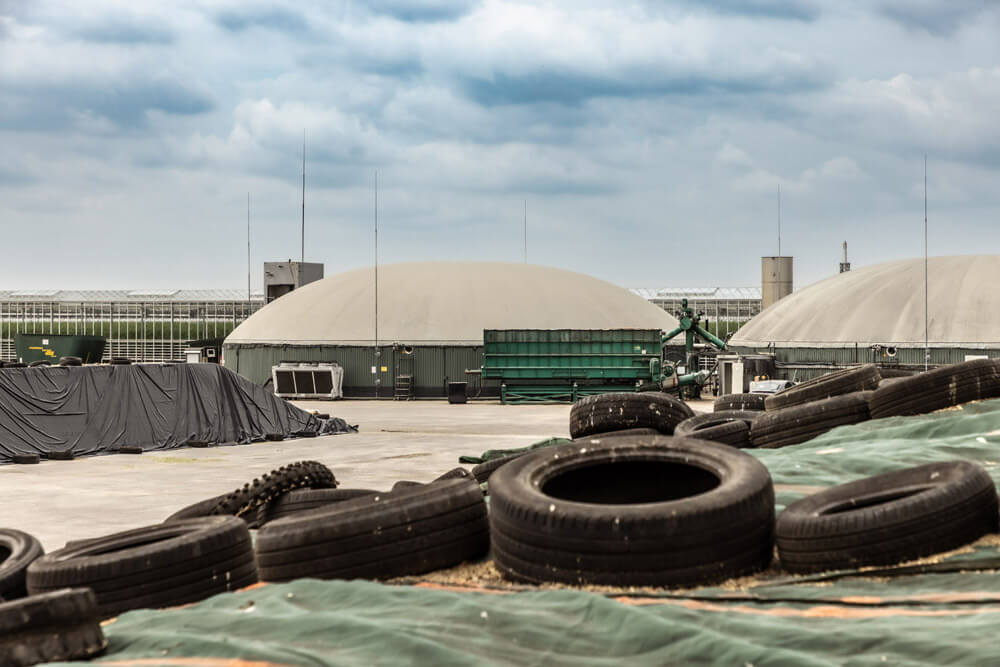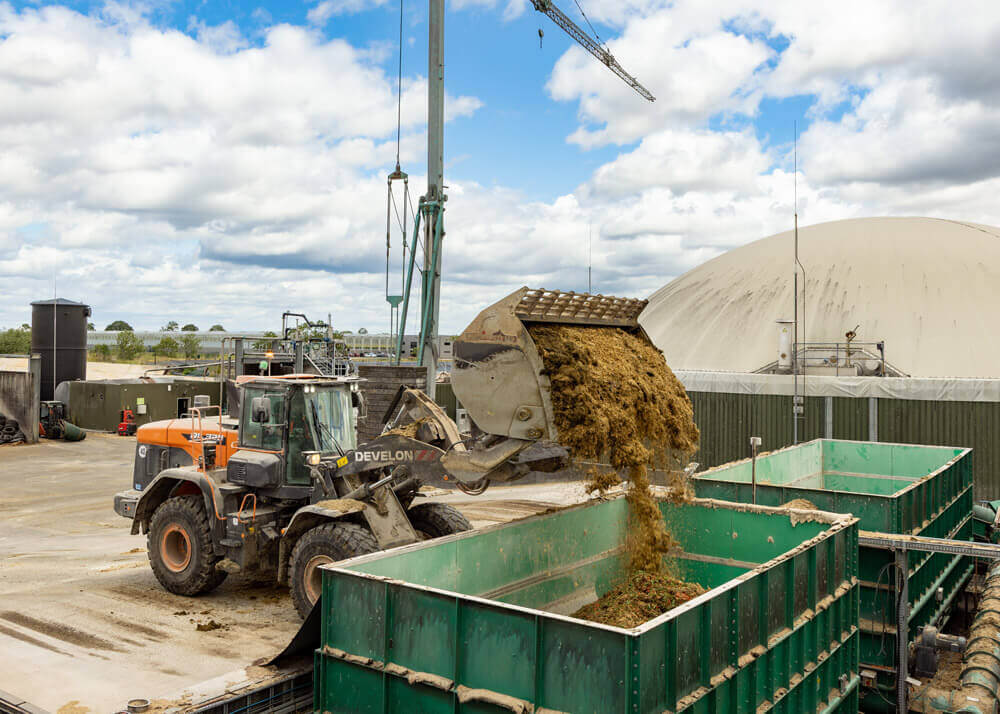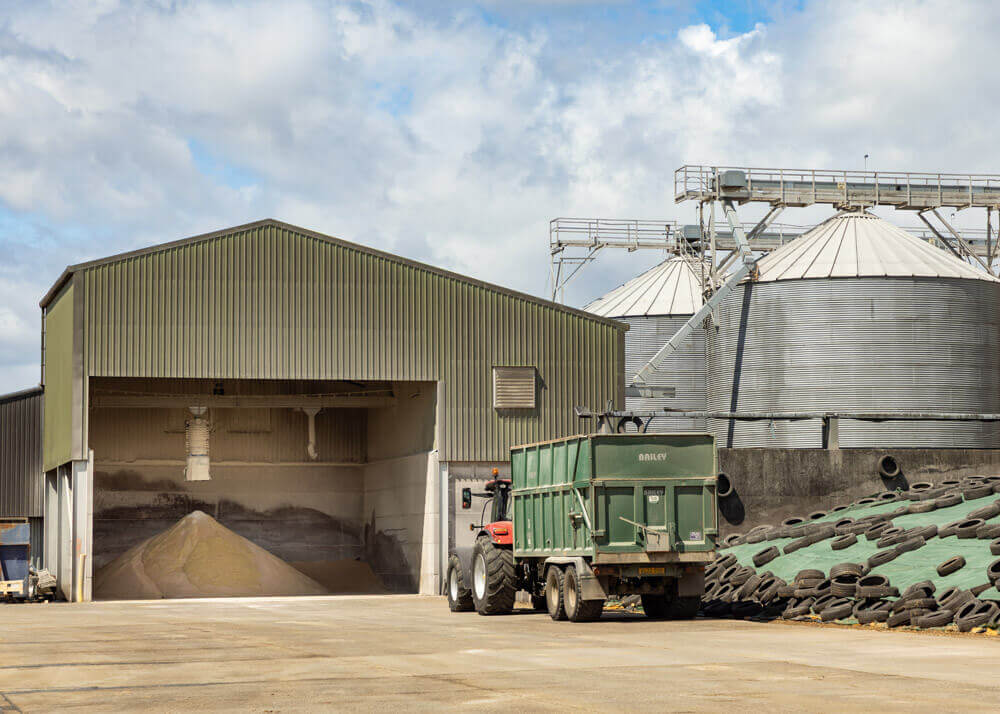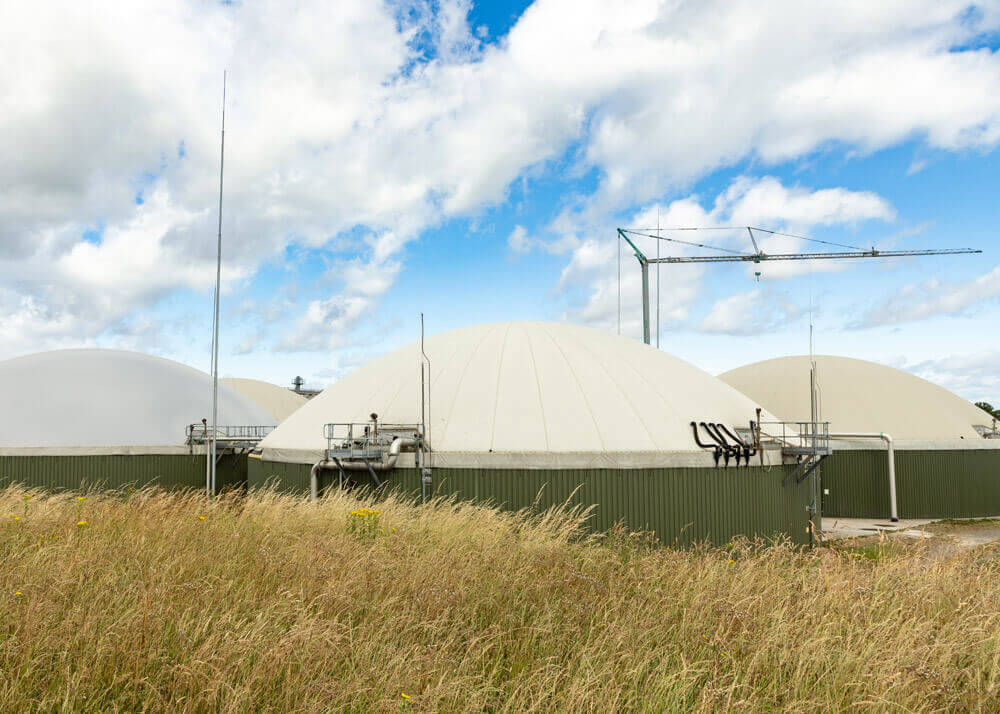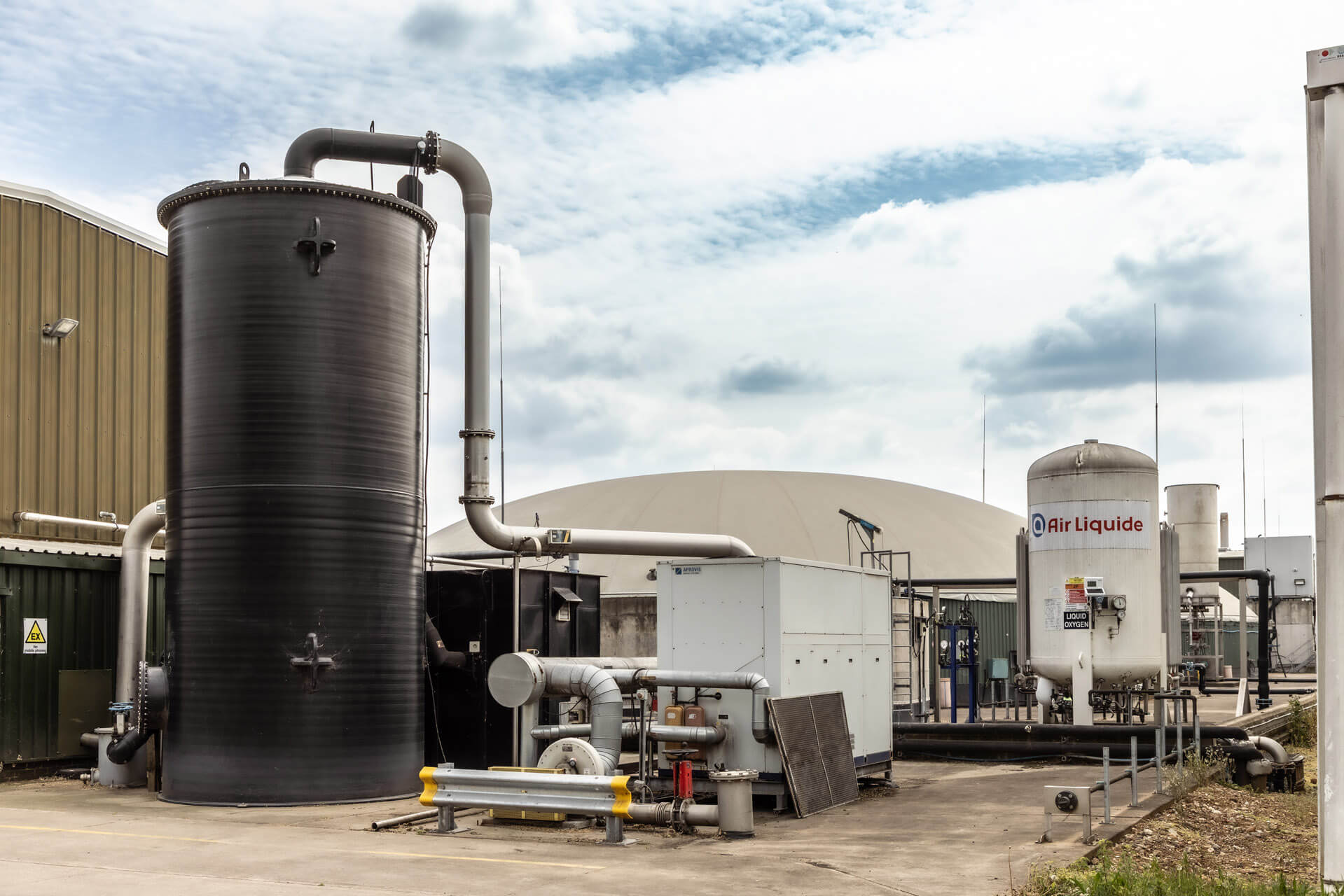What is Anaerobic Digestion (AD)?
Anaerobic Digestion is a process by which microorganisms break down biodegradable material in the absence of oxygen. The process is used for converting energy crops and waste streams into biogas. Biogas is a mixture of approximately 55% methane and 45% carbon dioxide with traces of hydrogen sulphide and ammonia.
The raw biogas is used as a fuel source generating electricity through a combined heat and power unit (CHP), further processing of the biogas allows a 97% pure methane stream for injection into the gas network.
This polishing process also produces a liquified CO2 at a 99% purity.
At Vale Green Energy we utilise the biogas for the following:
- Heat production (process heating, pasteurisation of liquid digestate, and exportable heat to a neighbouring poultry producer).
- Electricity production (process power, to reduce reliance on grid electricity with the ability to export surplus generated power).
- Transport fuel in vehicles designed to run on compressed gas.
- Injection into the mains gas grid for domestic or industrial use.


